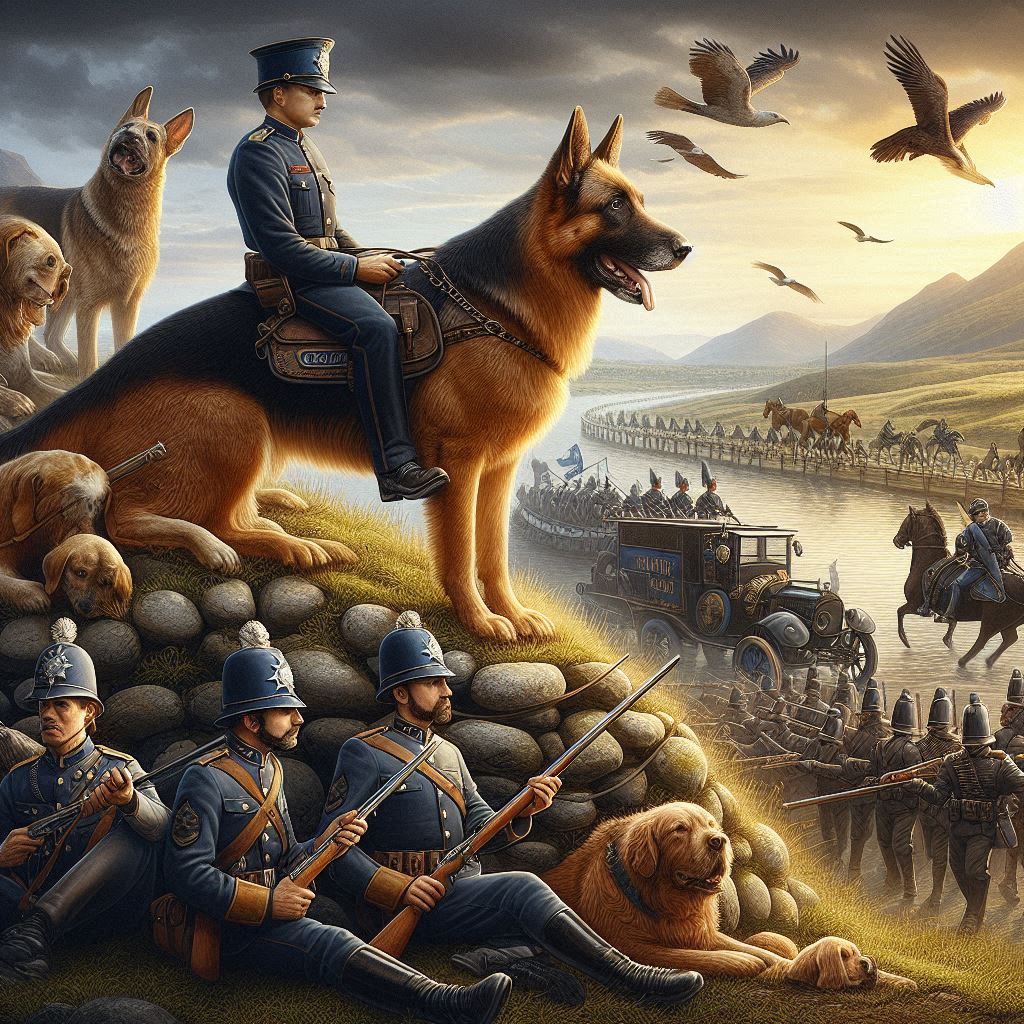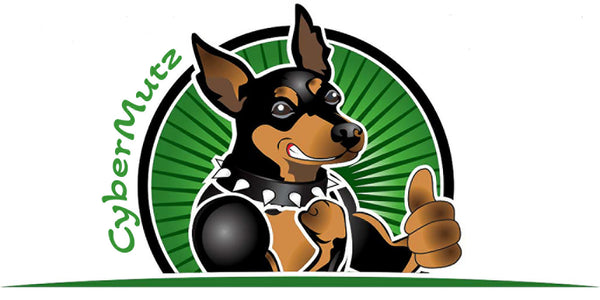
The History of Police Dogs and Their Training
Share
The History of Police Dogs and Their Training
Police dogs, also known as K9s, have a long and storied history of serving law enforcement agencies around the world. These incredible animals have become an integral part of police work, helping officers track criminals, detect drugs, and even save lives. The history of police dogs dates back centuries, with their training and role evolving significantly over time.
1. Early Beginnings: The Use of Dogs for Law Enforcement
The use of dogs for police work can be traced back to ancient civilizations. Early evidence suggests that dogs were employed by the Egyptians, Greeks, and Romans for various purposes, including guarding and tracking criminals. However, the modern history of police dogs as we know them today began in Europe in the late 19th and early 20th centuries.
In 1899, the first recorded use of a police dog was in Belgium. The Belgian police force began using trained dogs to assist in apprehending criminals. These early police dogs were typically large breeds like the Belgian Malinois, which was known for its strength, agility, and ability to work in challenging environments.
2. The Development of Modern Police Dog Units
As the use of dogs in law enforcement gained popularity, more organized police dog units were established. The first formal police dog training school was opened in Germany in 1908, with the primary goal of training dogs for police and military use. The school, known as the Polizeihundeschule (Police Dog School), set the standard for the systematic training of police dogs that would influence police forces worldwide.
Around the same time, in 1906, the French also began incorporating dogs into their police forces, particularly in the areas of tracking and apprehending suspects. By the early 20th century, the idea of using dogs to aid law enforcement became well established, with dogs being trained to perform a variety of specialized tasks.
3. The Role of Police Dogs in the Early 20th Century
In the early 1900s, police dogs were often used in Europe to help guard borders, track criminals, and assist in crowd control during protests or public disturbances. During World War I, police dogs were also used for military purposes, such as sending messages and detecting enemy positions.
In the United States, police dogs began to be utilized in the 1920s. The first known use of a police dog in the U.S. was in New York City in 1907, but it wasn’t until the 1930s that the idea of a formalized police dog program took off. The United States saw an increase in the adoption of police dogs, especially during the Great Depression, when law enforcement agencies needed all the help they could get to combat rising crime.
4. The Training Process: How Police Dogs Are Prepared for Duty
Police dog training has come a long way since its early days. Today, the training process for police dogs is rigorous, comprehensive, and designed to ensure that dogs can perform a wide range of tasks efficiently and safely. The training typically involves several key components:
• Basic Obedience: Just like any other dog, police dogs begin their training with basic obedience commands such as sit, stay, come, and heel. These foundational skills are essential for ensuring that the dog can follow commands in high-stress situations.
• Socialization: Police dogs must be comfortable in a variety of environments and around different people. This requires extensive socialization training so that the dog can interact calmly with officers, suspects, and the public while maintaining focus on the task at hand.
• Scent Detection: One of the most critical skills that police dogs develop is scent detection. This includes the ability to track a suspect’s scent, locate drugs, explosives, or even missing persons. Dogs have an extraordinary sense of smell, and training focuses on honing this ability to help law enforcement officers in their investigations.
• Protection and Apprehension: Police dogs are trained to defend their handlers and apprehend suspects if necessary. This part of training involves teaching the dog to be aggressive when given the appropriate command, but also to stop and release the suspect when instructed. It requires a balance of control and precision.
• Search and Rescue: In addition to tracking criminals, police dogs are also trained in search and rescue operations. These dogs are used to locate missing persons, whether in urban settings, forests, or after natural disasters. Their keen sense of smell allows them to find individuals who are otherwise difficult to locate.
• Specialized Tasks: Some police dogs are trained in more specialized skills, such as detecting narcotics, explosives, or even locating bodies. These tasks often require additional training beyond the basics.
5. The Different Breeds of Police Dogs
Various breeds are used as police dogs, depending on the specific duties they are required to perform. Some of the most common breeds used in police work include:
• German Shepherd: The most iconic breed in police work, the German Shepherd is known for its intelligence, loyalty, and versatility. It is commonly used for tracking, detection, and protection tasks.
• Belgian Malinois: Often compared to the German Shepherd, the Belgian Malinois is smaller and more agile, making it ideal for high-intensity tasks. This breed is often used for detection work and apprehension.
• Dutch Shepherd: Known for its excellent work ethic and versatility, the Dutch Shepherd is often used in police work, particularly for tracking and apprehension.
• Labrador Retriever: While not as commonly used for protection work, the Labrador is highly skilled in scent detection, making it a favorite choice for narcotics and explosives detection.
• Springer Spaniel: This breed is often used in specialized detection roles, such as locating drugs and explosives, due to its keen sense of smell.
6. The Role of Police Dogs Today
Today, police dogs continue to play an essential role in law enforcement. They are used to help with a variety of tasks, including:
• Search and rescue: Police dogs are instrumental in locating missing persons, whether in urban settings, wilderness areas, or after natural disasters.
• Narcotics detection: Many police dogs are trained to detect drugs, playing a crucial role in drug enforcement efforts.
• Explosives detection: K9s are trained to sniff out bombs and explosives, making them indispensable for security in airports, government buildings, and other high-risk areas.
• Apprehension and protection: Police dogs are often used to apprehend dangerous suspects, and they protect their handlers during high-risk arrests or dangerous situations.
7. The Bond Between Police Dogs and Their Handlers
One of the most remarkable aspects of police dog work is the bond between the dog and its handler. The relationship is built on trust, mutual respect, and constant communication. Handlers often spend years working alongside their K9s, forming a deep emotional connection. This bond is critical in high-stress situations, as the handler needs to rely on the dog’s instincts, and the dog trusts the handler to guide them through challenging scenarios.
Conclusion
Police dogs have come a long way from their early beginnings in ancient civilizations. Today, they are highly trained professionals, working alongside law enforcement officers to ensure public safety, assist in investigations, and even save lives. The history of police dogs and their training is a testament to their incredible abilities and the special relationship they share with their human counterparts. As law enforcement continues to evolve, so too does the role of police dogs in protecting and serving communities around the world.
CyberMutz.com (Dog-Themed Apparel & Accessories)
“CyberMutz.com – Explore a unique collection of dog-themed apparel, accessories, and gifts for pet lovers. Shop stylish, high-quality designs featuring your favorite dog breeds!” Category Page Descriptions: Dog Breed T-Shirts: “Show off your love for dogs with our exclusive breed-themed T-shirts. From German Shepherds to Chihuahuas, find high-quality, comfortable tees celebrating your favorite pup!” Dog Breed Pet Tank Tops: “Keep your furry friend stylish and comfortable with our dog breed-themed pet tank tops. Perfect for small and large dogs, these unique designs are a must-have!” Funny Dog-Themed Apparel: “Love dogs and humor? Our funny dog-themed apparel blends style with witty canine-inspired designs. Shop now for T-shirts, hoodies, and more!” Personalized Dog Merchandise: “Customize your dog lover’s gear with our personalized pet-themed apparel and accessories. Create a one-of-a-kind look for yourself or a perfect gift for a fellow dog enthusiast!”
CyberPussyKatz.com (Cat-Themed Apparel & Accessories)
“CyberPussyKatz.com – Celebrate your love for cats with our premium collection of feline-inspired apparel and accessories. Purr-fect designs for every cat lover!” Category Page Descriptions: Cat Breed T-Shirts: “Showcase your favorite feline friend with our stylish cat breed-themed T-shirts. From Maine Coons to Siamese, find the perfect tee for cat lovers!” Funny Cat-Themed Apparel: “Express your quirky side with our funny cat-themed T-shirts, hoodies, and more. Pawsome designs for those who love cats and humor!” Personalized Cat Merchandise: “Make it personal with custom cat-themed apparel and accessories. Create a unique gift or a special piece just for you!”
CyberMunkiez.com (Monkey-Themed Apparel & Accessories)
“CyberMunkiez.com – A fun collection of monkey-inspired apparel and accessories. Perfect for primate lovers who enjoy bold, playful, and unique designs!” Category Page Descriptions: Monkey-Themed T-Shirts: “Go bananas over our monkey-themed T-shirts! Whether you love capuchins, chimps, or gorillas, our designs bring out your wild side.” Funny Primate Apparel: “Add a touch of humor to your wardrobe with our hilarious monkey and ape-inspired apparel. Great for animal lovers and jungle enthusiasts!” Custom Monkey Merchandise: “Make it yours! Personalize your favorite monkey designs on T-shirts, hoodies, and more for a one-of-a-kind look.”
